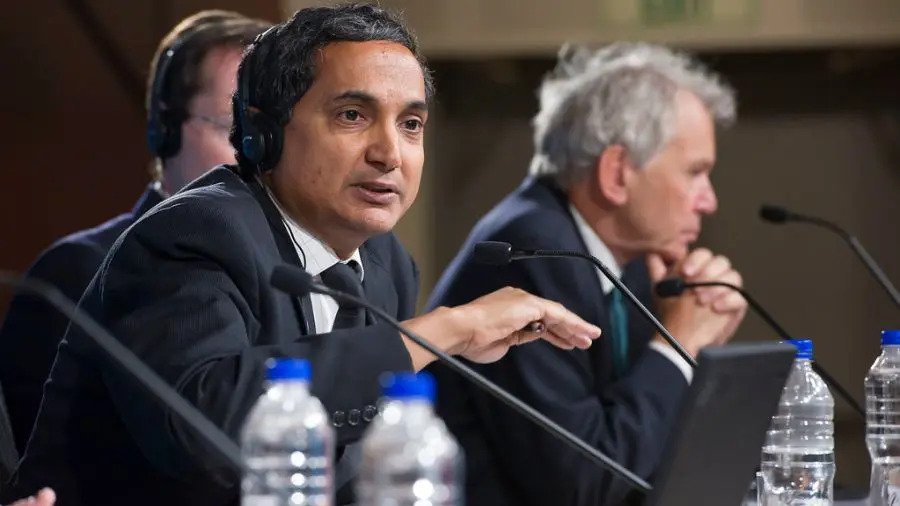- Web Desk
- Today
IMF director highlights Asia-Pacific resilience amid global economic challenges
-

- Web Desk
- Oct 13, 2023

MARRAKESH: The International Monetary Fund (IMF)’s Asia and Pacific Department Director, Krishna Srinivasan, shared insights into the global and regional economic outlook during a press conference at the Regional Economic Outlook event held in Marrakesh, Morocco.
Srinivasan outlined key points related to global and regional growth, with particular attention to the Asia-Pacific region.
Srinivasan began by discussing the global economic landscape. He noted that global growth is forecast to slow, dropping from 3.5 per cent in 2022 to 3 per cent in 2023 and further to 2.9 per cent in 2024.
While the United States continues to exhibit strong consumption dynamics, several factors are exerting pressure on the global economy. These include China’s deteriorating property crisis, tight monetary policies worldwide, the consequences of Russia’s war in Ukraine, and an increasing trend toward geoeconomic fragmentation, Srinivasan said.
Despite these global challenges, the Asia-Pacific region stands as a relatively bright spot.
He said that the region is projected to maintain robust growth, with a forecast of 4.6 percent in 2023 and 4.2 percent in 2024. This momentum positions the Asia-Pacific region to contribute significantly to global growth, accounting for about two-thirds of the world’s economic expansion.
Srinivasan touched upon China’s economic situation, mentioning that the reopening of its economy has provided a boost to the service sector and retail sales, mirroring trends in other economies. However, the manufacturing sector is facing a more transient benefit. The real estate sector in China continues to grapple with challenges, including mounting pressures related to debt repayments, home sales, and investments.
Consequently, the IMF has revised down China’s growth forecast to 5 per cent for 2023 and 4.2 per cent for 2024.
While South Asia lies outside the immediate purview of the Asia-Pacific discussion, a major chunk of the discussion touched upon economic parameters common to India, Bangladesh, and Pakistan.
Srinivasan said that India’s economic growth remains robust, driven by substantial public capital expenditure and resilient domestic demand. The IMF projects India’s economy to grow by 6.3 per cent in both 2023 and 2024.
IMF anticipates accelerated economic recovery for Pakistan
Addressing a question posed by a Bangladeshi journalist regarding why the IMF’s growth projections for Bangladesh were lower than those of the Bangladeshi government, Srinivasan emphasized the need for Bangladesh to balance growth objectives with long-term stability.
He noted that global economic conditions, including high commodity prices and global monetary tightening, are impacting South Asian countries, making sound macroeconomic stability a priority.
Srinivasan recommended a focus on labour reforms, digitization, and easing trade restrictions for the nation.
The global platform offered an opportunity to journalists from across Asia Pacific as well as from South Asia to highlight the concerns, strengths and weaknesses of their home countries.
This might have been a good opportunity for Pakistan to raise its concerns with respect to hyperinflation folding in the country, being worsened by IMF limitations, but that opportunity was lost to a question on whether Pakistan and India should resume trade, especially in the context of the completion of the China-Pakistan Economic Corridor (CPEC) project.
In response to this, Srinivasan avoided speaking on Pakistan saying it fell out of the purview of his department but he underlined the benefits of trade integration as an economic policy. He stressed that trade integration is a beneficial policy worldwide and any country implementing policies that favor trade integration stands to benefit from such actions.




